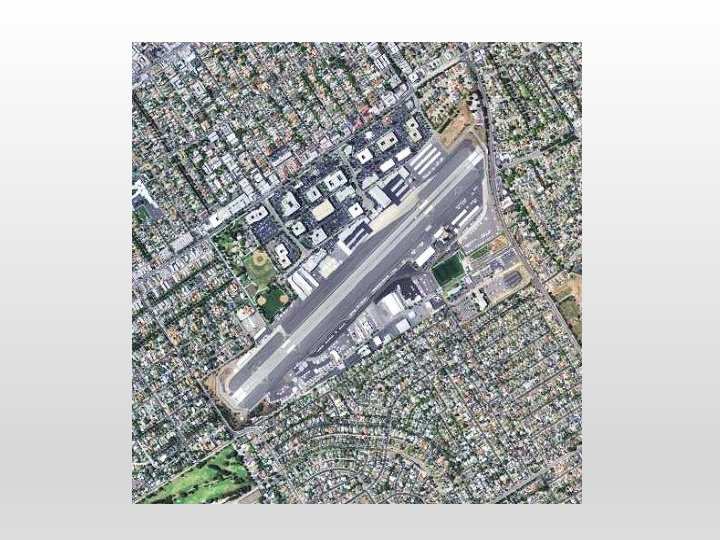



2012 FAA Airfield Design Document, Change 1 ■ Specifies FAA Airfield design and safety criteria – RSAs: Mandatory, ongoing demand for FAA and airfield operator to meet RSA standards since 2012 – FAA can’t waive/ignore like in 2011 C/D lawsuit ■ FAA and NBAA knew this for 5 years – but – Insured no SMO RSAs ■ FAA Runway Safety Areas mu must have – 300’ with first 150’ asphalt for blast protection – Compacted earth or similar natural surface
SMO Lacked Runway Safety Areas ■ Required by FAA since nce 2012 – FAA, NBAA, and past Airport Manager had to know
SMO then – if th the City y ha had complied plied with FAA safety RSA requirements ■ SMO should ld have been configured like this since 2013 – 300’ RSAs - 150’ blast asphalt & 150’ compacted earth – FAA safety requirements not ot acknowledged by FAA or NBAA
Consent Agreement - 3,500’ Runway ■ Exceeds all FAA safety requirements ■ Excess runway pavement replaced with natural surfaces ■ Compacted earth: Overrun and undershoot protection
Proposed Staff Option 1 (with future City Council Change 1) RSA paint job; 150’ asphalt blast pads; new taxiways just at the new runway ends
But it’s only 600 feet longer… So why does it matter? It provides loopholes for MANY MORE jet ops 1. FAA “sets aside” the first 1,000’ for aircraft to descend 50’, slow, and flare for touchdown – True comparison: 2,500’ vs 3,100’ 2. FAA: “commercial” flights must have 40% safety margins; SMO’s downslope adds another 10% – Present FAA required runway length: 1,750’ – Proposed change permits: 2,050’ – Why we don’t have Surf Air and more On -Demand emand jets ets now! 2,050’ - Just long enough – based on City’s Coffman data To easil sily y double uble SMO jet et operatio erations ns
Why the “full - court press” - no now w - to save the RSAs? Old FAA AA adage ge “It’s a thousand times easier to save a runway than to pour concrete.” An And diver ert t a billion ion dollar llars s worth th of pub ublic c goods ods – our ur land For r private gains
Recommend
More recommend